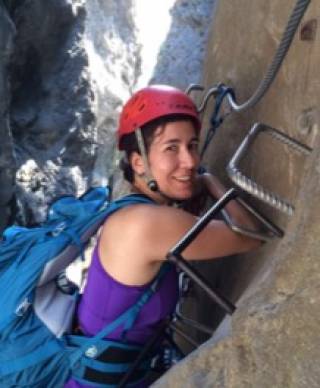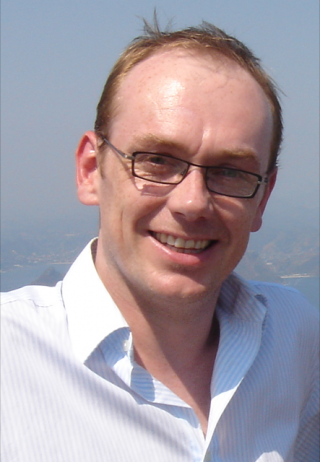Our methodological portfolio provides trainees with a wide-ranging selection of cutting-edge research projects in three broad and interlinking topics.
Imaging Technologies
- Imaging Devices
This theme concerns novel imaging instrumentation with potential for clinical applications. UCL is world leading in a number of areas, including x-ray, photoacoustic, and MEG imaging.
We host the UK’s leading x-ray phase contrast imaging laboratory, with its own proprietary method which is arguably world-leading in terms of clinical potential. In optics, novel devices and techniques are being developed for diffuse optical imaging and spectroscopy of haemodynamic and metabolic variables in the brain and muscle. One example is a wearable optical tomography system, which uses near-infrared light to probe the cortex of the human brain, producing real time images of brain activity.
In photoacoustics, we have developed a novel, high-resolution 3D scanner based on an optical ultrasound sensor for small animal and clinical imaging applications. In MEG, UCL leads the pioneering wearable MEG research, a recent breakthrough that opens the door for wider clinical applications. UCL was also a major partner in developing the world-first SPECT/MRI system for brain imaging and is now leading its clinical translation.
Imaging devices lead: Prof Paul Beard. Prof Beard is a world leader in photoacoustics, holder of an ERC Advanced grant, with ~£4.5m funding and ~200 publications (>7500 citations and H-index 41).

- Image Acquisition
This theme concerns the innovation of new imaging techniques using existing hardware. UCL has made pioneering contributions in several areas of MRI research, including the non-invasive imaging of glucose metabolism in tumours, tissue microstructure in central nervous system and cerebral blood flow, and quantitative relaxometry and susceptibility mapping.
UCL is a world leader in model-based imaging, a paradigm underpinned by tight integration of image acquisition with computational modelling for designing economical acquisition protocols. We are already pioneering the usage of machine learning in this context, but major opportunities remain to train skilled researchers to revolutionise this space. HCI is increasingly important as early techniques are already transitioning from basic science to clinical application.
The theme includes other modalities, such as optical imaging, ultrasound, and PET where similar opportunities arise.
Image acquisition lead: Prof Claudia Wheeler-Kingshott. Prof Wheeler-Kingshott is a world-leading expert in quantitative MRI, with >£6.5m funding (>12000 citations and H-index 49).

- Image Reconstruction
This theme concerns the reconstruction of images from acquired data that is at the heart of the large majority of medical imaging techniques, through the solution of an inverse problem.
UCL is world leading in a number of areas under this theme, exemplified in techniques such as diffuse optical tomography, more recently photoacoustic tomography and joint PET/MRI reconstruction. Such inverse problems are ill-posed in almost all practical settings; their solution requires regularisation based on prior information. A major opportunity is to combine knowledge-driven (e.g. physics-based) models with data-driven (e.g. Deep Learning based) models.
In addition to greater accuracy, such approaches facilitate uncertainty estimation and subsequent error propagation essential for integration of image-based and other information in downstream inference. We have shown that end-to-end optimisation combining acquisition, reconstruction, and analysis leads to considerable improvement in challenging applications, such as low-dose PET.
Image reconstruction lead: Prof Simon Arridge. Prof Arridge is a world-renowned expert on inverse problems in medical imaging, with >£5.7m funding and >250 publications (>29000 citations and H-index 79).
Image Computing
- Computational Modelling
This theme concerns the modelling of physical or biological processes relevant to biomedicine using analytic or numerical simulations across multiple biological, length, and temporal scales.
On the one hand, imaging is a key enabler of this type of research by providing non-invasive measurements required for realistic and personalisable simulations. On the other, computational modelling also underpins imaging by connecting clinically relevant information that we cannot access directly to the physical quantities that our imaging devices can measure. UCL has pioneering research in modelling of transport phenomena, such as flow of blood in vasculature e.g. with REANIMATE, light transport in tissue with TOAST, and molecular diffusion with Camino.
These systems have applications to simulation-enhanced personalised medicine, medical device testing, model-based imaging, as well as general understanding of physiology and disease. AI and big data provide major opportunities to construct ever more powerful models that are beyond the reach of our current technological capabilities. Computational simulations can also be a rich source of data to train machine learning models.
Computational modelling lead: Dr Vanessa Diaz. Dr Diaz is a world leader in multiscale cardiovascular engineering, holder of a prestigious Leverhulme Trust Senior Research fellowship, recipient of the George Stephenson Gold Medal 2018 from the Institute of Mechanical Engineering.
- Image Analysis
This theme concerns information extraction from medical images and the methodologies that support this. UCL researchers have made pioneering contributions in this space, including voxel-based morphometry for anatomical MRI, crossing fibre resolution and probabilistic tractography for diffusion MRI and quantitative CT and PET/CT in the lung.
Major opportunities lie in harnessing big data and AI to revolutionise this theme. Many machine learning algorithms work by fitting models to data, but there is currently a dichotomy between the transparency of those models and their predictive accuracy. The challenge now is to discover interpretable and accurate image-based modelling approaches that can make clinically useful predictions while retaining the ability to reveal interesting scientific insights. For effective image-based systems, a further challenge is modelling uncertainty in extracted features, accounting for measurement error, reconstruction error, and errors of image analysis algorithms.
Image analysis lead: Prof John Ashburner. Prof Ashburner is world-renowned for brain image analysis and applying machine learning to neuroimaging, with >120 publications (>61000 citations and H-index 90).

Integrated Systems
- Actionable Analytic Systems
This theme exploits information extracted from images, fused with other information, to derive diagnostic and prognostic statements about individual patients. UCL researchers have pioneered the use of statistical and machine learning techniques for classifying and predicting progression in, for example, neurological disease patients from neuroimaging or prostate cancer from multi-parametric MRI.
We lead the international TADPOLE challenge predicting progression and outcomes in patients at risk of AD. The UCL POND group’s pioneering work on temporal models of disease progression, such as the eventbased model, and more recent work on data-driven subtyping using Subtype and Stage Inference (SuStaIn), provides new insight into the landscape and nature of disease endophenotypes. It also provides fine-grained stratification for precision medicine, and supports new mechanistic understanding of disease in conjunction with computational modelling. We have major opportunities to devise new and advanced models that reveal finer details of the disease process, the subtype landscape, and the effects of comorbidity and life history.
Moreover, novel computational challenges arise in exploiting these models to guide treatment choices and design, across a wide range of disease areas including neurology, oncology, pulmonology, and general accumulation of multimorbidity and frailty. Effective systems require imaging components designed to integrate with other information, e.g. through well quantified accuracy and uncertainty.
Actionable analytic systems lead: Prof Danny Alexander. Prof Alexander is a leading expert on computational modelling, machine learning and medical imaging, with >£10M funding and >150 publications (>12500 citations and H-index 53).

- Interventional Systems
This theme integrates imaging technologies and image computing to deliver integrated front-line therapies and interventions. Current examples exist in Image Guided Therapy and Surgical Systems, which have emerged as one of the most exciting multidisciplinary applications of medical imaging science.
UCL has an outstanding track record of research in this space, with major projects in image-guided laparoscopic liver surgery, minimallyinvasive interventions for prostate and pancreatic cancer, modelling cardiovascular interventions, interventional optical imaging, haptic devices, and medical robotics. The recent launch of the £13M WEISS centre provides facilities and resources to support basic and translational research, including a state-of-the-art mock operating theatre dedicated to research use, with equipment for xray imaging, ultrasound, and 3D real-time instrument tracking. We need to train individuals with deep insight into the underlying technologies and their application to clinical problems, usercentred design, as well as a wider awareness of the clinical context, risks, and commercial and health economic factors
Interventional systems lead: Dr Dean Barratt. Dr Barratt is an expert in image-guided interventions, particularly for the diagnosis and treatment of cancer, with >100 publications (>2800 citations and H-index 31).
 Close
Close

